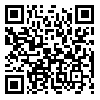Volume 2, Issue 4 (Spring 2013)
J. Aqua. Eco 2013, 2(4): 28-18 |
Back to browse issues page
Download citation:
BibTeX | RIS | EndNote | Medlars | ProCite | Reference Manager | RefWorks
Send citation to:



BibTeX | RIS | EndNote | Medlars | ProCite | Reference Manager | RefWorks
Send citation to:
Paighambari S Y, Daliri M, Kia-alvandi S. The catch composition of the beach seine fishery in southeast of the Caspian Sea (Case study: Golestan Province). J. Aqua. Eco 2013; 2 (4) :28-18
URL: http://jae.hormozgan.ac.ir/article-1-99-en.html
URL: http://jae.hormozgan.ac.ir/article-1-99-en.html
Abstract: (8304 Views)
The beach seine fishery is performed regularly along Iranian coasts of the Caspian Sea. The aim of the present study was to determinate of the species composition of beach seine fishery in Golestan Province. Due to the extent of fisheries cooperatives in the study area 7 cooperatives was selected, namely Magtymguly, Niyaz Abad, Yashar, Shayan Aydin, Golestan, Charqly, Norgolestan and Nemune. Sampling was done weekly basis from late September 2009 to late April 2010. The beach seine nets used in this fishing area were 1200m long and mesh size was 30 to 33mm (Bar length). A total of 462680 Kg teleost fish were caught during the 1534 hauls. The CPUE of teleost fish was 298.8 Kg among the selected cooperatives. The highest and lowest CPUE was observed in Yashar (with 207.5 Kg) and Norgolestan cooperatives (462.4 Kg). Data analyses indicate that Golden grey mullet (with 52.6%) and Roach (with 0.02%) have the highest and lowest proportion of total teleost fish catch. The catch composition did not differ significantly between different months (Chi-square test, P>0.05). In Golden grey mullet, Kutum and Common carp 70.75%, 49.36% and 73.68% of specimens caught were larger than fishing standard size respectively, but in Persian sturgeon 96% of fish captured was smaller than fishing standard size. Results of one sample t test showed that mean length of caught target species, except Kutum, have differ significantly with their Lm 50. In the last decade, catch amount of teleost fish have fluctuated and it was lowest in 2009. It could be managed by making regulations for improving fishing selectivity (such as mesh size and other equipment of fishing gears), more prohibition of spatial and temporal fishing, etc.
Send email to the article author
| Rights and permissions | |
 |
This work is licensed under a Creative Commons Attribution-NonCommercial 4.0 International License. |

This work is licensed under a Creative Commons — Attribution-NonCommercial 4.0 International (CC BY-NC 4.0)






